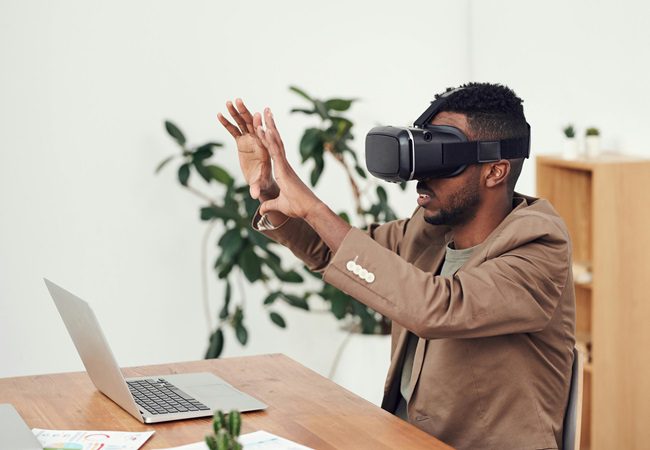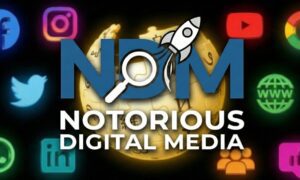Introduction:
In the ever-evolving landscape of education and training, Virtual Reality (VR) has emerged as a transformative force, reshaping how individuals acquire and develop essential skills. This article explores the profound impact of VR in skill development, shedding light on the revolutionary changes it brings to traditional learning methods.
The Evolution of Virtual Reality in Education:
The journey of Virtual Reality in education has been nothing short of revolutionary. From its early applications in gaming and entertainment, VR has found a new purpose in enhancing learning experiences. The immersive nature of VR technology creates a simulated environment that enables learners to engage with content in ways that were previously unimaginable.
VR’s role in skill development is particularly noteworthy. Traditional educational methods often struggle to provide hands-on experiences, especially in fields requiring practical expertise. Virtual Reality bridges this gap by offering a dynamic and interactive platform for learners to hone their skills in a risk-free virtual setting.
Hands-On Learning in a Virtual Realm:
One of the primary advantages of VR in skill development is the ability to offer hands-on learning experiences. Whether it’s medical students practicing surgical procedures or aspiring pilots navigating virtual flight simulations, VR provides a safe and controlled environment for learners to apply theoretical knowledge in a practical setting.
Shortening the Learning Curve:
The immersive nature of VR accelerates the learning curve by allowing individuals to repeatedly practice and refine their skills. This repetitive practice, combined with real-time feedback, facilitates a deeper understanding of concepts and enhances muscle memory. As a result, learners can master complex skills more efficiently, ultimately shortening the time it takes to become proficient in a particular field.
Transitioning to Short Sentences:
Beyond the advantages of hands-on learning, the concise and direct nature of short sentences aids in conveying information effectively. In skill development, clarity is paramount, and shorter sentences ensure that learners can easily grasp and retain essential concepts. Let’s delve into specific examples to illustrate the impact of short sentences in conveying complex ideas.
Consider a scenario where a virtual reality training program is teaching electrical engineering concepts. Short sentences can succinctly describe the step-by-step process of assembling circuit components, making it easier for learners to follow and comprehend each stage. This clarity contributes to a more efficient learning process.
Utilizing Transitions for Seamless Learning:
Seamless transitions play a crucial role in maintaining the flow of information within educational content. When exploring the intricacies of skill development through VR, transitions guide learners from one concept to the next, ensuring a cohesive and understandable learning experience.
For instance, as learners progress through a virtual medical training program, transitions can smoothly guide them from mastering basic anatomical structures to practicing complex surgical procedures. This logical progression keeps learners engaged and enables them to build on foundational knowledge as they advance through the VR curriculum.
The Adaptive Nature of VR Learning Platforms:
Virtual Reality learning platforms are not only immersive but also adaptive. These platforms can tailor the learning experience based on individual progress and performance. Through data analytics, VR systems can identify areas where learners excel and areas that require additional focus, providing a personalized and targeted approach to skill development.
The adaptive nature of VR ensures that learners receive the right level of challenge, preventing boredom from easy tasks or frustration from overly complex ones. This personalized approach is a game-changer in skill development, as it allows each learner to progress at their own pace, ensuring mastery before moving on to more advanced concepts.
Breaking Down Geographic Barriers:
Another aspect of VR’s impact on skill development lies in its ability to break down geographic barriers. Traditional educational methods often face limitations in reaching learners in remote or underserved areas. Virtual Reality transcends these limitations by providing access to high-quality education and training experiences from anywhere in the world.
Consider a scenario where a rural school lacks resources for advanced science laboratories. Virtual Reality can bridge this gap by offering virtual science labs, allowing students to conduct experiments and explore scientific principles in a virtual setting. This not only democratizes access to education but also opens up opportunities for skill development in areas that may have been previously underserved.
Fostering Collaboration and Teamwork:
Skill development often extends beyond individual mastery to collaboration and teamwork. VR simulations can replicate real-world scenarios where individuals must work together to achieve common goals. This collaborative aspect of VR enhances interpersonal skills, communication, and the ability to function effectively within a team.
Transitions in VR scenarios can seamlessly guide learners from individual skill development modules to group activities. For example, in a virtual business simulation, learners can transition from mastering financial analysis on an individual level to collaborating with virtual team members on a complex project. This mirrors real-world scenarios, preparing learners for the collaborative demands of their future professions.
The Role of VR in Professional Development:
Virtual Reality is not confined to traditional education systems; it is increasingly becoming a cornerstone in professional development. Many industries recognize the value of immersive training experiences in preparing employees for real-world challenges. From corporate workshops to medical conferences, VR is revolutionizing how professionals acquire and refine their skills.
The adaptability of VR allows professionals to engage in realistic scenarios relevant to their fields. For instance, emergency responders can undergo virtual disaster simulations, honing their crisis management skills in a risk-free environment. This practical and experiential learning approach ensures that professionals are well-prepared to handle challenges in their respective industries.
Future Trends and Challenges in VR Skill Development:
As Virtual Reality continues to shape the landscape of skill development, several trends and challenges are on the horizon. The integration of Artificial Intelligence (AI) to enhance VR learning experiences, the development of more affordable VR hardware, and the creation of standardized VR content are some of the anticipated trends.
However, challenges such as ensuring accessibility, addressing concerns about motion sickness, and navigating ethical considerations in VR training programs are areas that developers and educators must address. Overcoming these challenges will be crucial to maximizing the potential of VR in skill development across various domains.
Conclusion:
Virtual Reality has emerged as a transformative force in revolutionizing skill development across education and professional landscapes. The immersive and adaptive nature of VR provides unparalleled opportunities for hands-on learning, shortening the learning curve, and fostering collaboration. With the right balance of concise sentences and seamless transitions, VR becomes a powerful tool in equipping individuals with the skills they need to thrive in their chosen fields. As we navigate the future of education and training, Virtual Reality stands at the forefront, promising a dynamic and experiential approach to skill development that transcends traditional boundaries. Embrace the virtual revolution, and unlock the full potential of learning through the immersive realms of Virtual Reality.

































